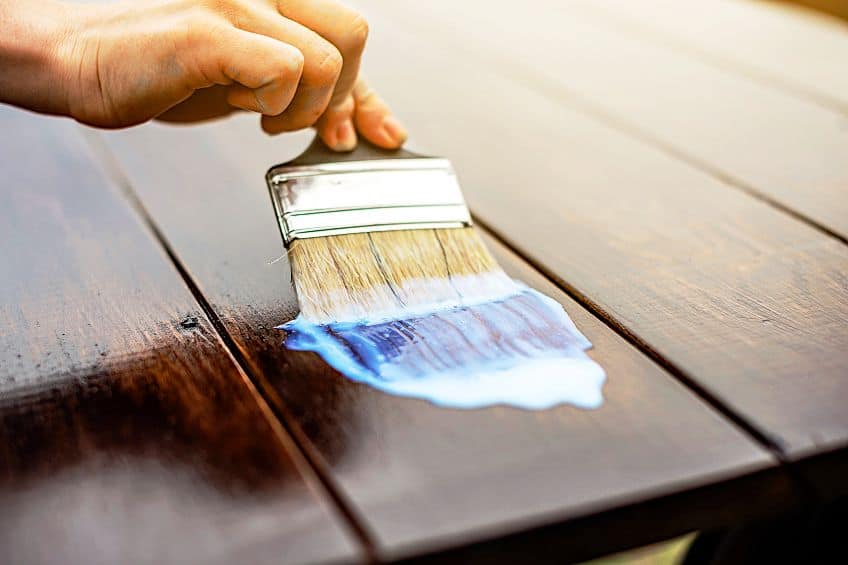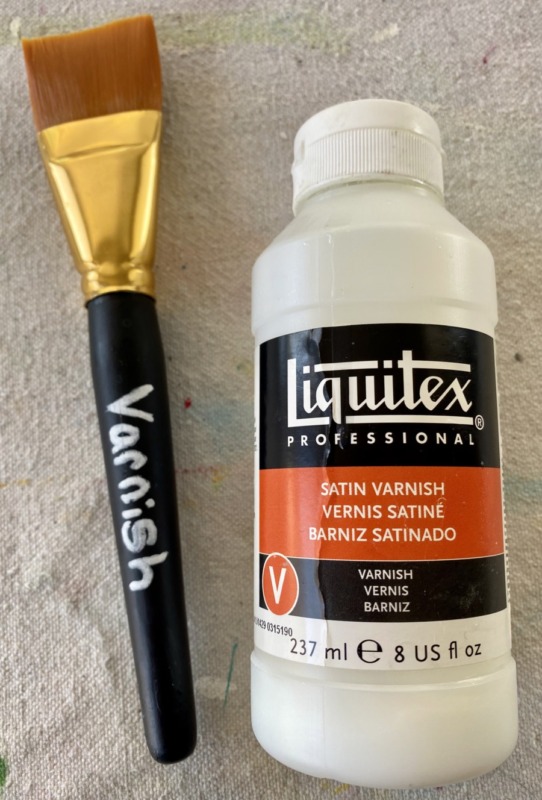To seal acrylic paint on wood, use a clear acrylic sealer or polyurethane. Apply it with a brush or spray for even coverage.
Acrylic paint is popular for its vibrant colors and versatility, especially on wood. Sealing the paint helps protect it from scratches, moisture, and fading. Whether you’re working on furniture, crafts, or art projects, sealing enhances durability and prolongs the life of your work.
Various sealers are available, including water-based and oil-based options, each offering unique benefits. Choosing the right product ensures your painted surface stays beautiful and intact. Follow the proper sealing techniques for the best results, and enjoy your creative projects without worrying about wear and tear. This guide will help you navigate the sealing process effectively.

Credit: artincontext.org
Contents
Introduction To Acrylic Painting On Wood
Acrylic painting on wood is very popular. Many artists love using wood canvases. The natural texture of wood adds depth to the artwork. It makes colors appear vibrant and alive.
Using wood allows for creative freedom. Artists can choose different types of wood, like pine or birch. Each type has its unique characteristics. Some woods absorb paint differently, affecting the final look.
Acrylic paint is easy to work with. It dries quickly and is water-based. This means artists can easily clean their brushes and tools. The paint also offers flexibility and can be layered easily.
Understanding the basics of acrylic paint is essential. It is important to know about mixing colors and application techniques. These skills help create stunning artwork on wood surfaces.
“`
Credit: stepbysteppainting.net
Preparing The Wood Surface
Choosing the right wood is important for a good finish. Softwoods like pine or fir are easy to work with. Hardwoods like oak or maple are more durable but harder to sand.
Sanding techniques matter for a smooth surface. Start with coarse sandpaper, then use finer grits. Always sand in the direction of the grain to avoid scratches.
Cleaning the surface is key before painting. Use a damp cloth to remove dust and debris. Make sure the wood is completely dry before applying paint.
Priming The Wood
Priming wood before painting has many benefits. It helps the paint stick better. Primers also prevent the wood from soaking up the paint. This creates a smooth surface for your work.
Choose a primer that fits your project. Look for products labeled as water-based or oil-based. Water-based primers are easier to clean. Oil-based primers are great for outdoor projects.
For best results, apply the primer evenly. Use a brush or roller for smooth coverage. Let it dry completely before painting. Sand the surface lightly for extra smoothness.

Credit: m.youtube.com
Applying Acrylic Paint
To achieve great results with acrylic paint, start with a clean wood surface. Apply a primer for better adhesion. Use multiple thin layers of paint instead of one thick layer. This helps prevent drips and uneven textures.
Texture can enhance your project. Use tools like sponges, brushes, or palette knives for different effects. Experiment with various techniques to find what you like best.
Patience is key with drying times. Generally, acrylic paint dries quickly, usually within 30 minutes to 1 hour. Wait for each layer to dry completely before applying the next one. This ensures a smooth finish.
Sealing Acrylic Paint On Wood
Sealing acrylic paint on wood is very important. It helps protect the paint from damage. Sealants keep colors bright and vibrant. They also make surfaces easier to clean.
Different types of sealants include water-based and oil-based options. Each type has unique benefits. Water-based sealants dry quickly and have low odor. Oil-based sealants provide a strong protective layer.
Brush sealants allow for precise application. They work well for detailed areas. Spray sealants cover large areas quickly. They are great for smooth finishes.
| Sealant Type | Pros | Cons |
|---|---|---|
| Water-Based | Quick drying, low odor | May not be as durable |
| Oil-Based | Strong protection | Longer drying time, strong odor |
Step-by-step Sealing Process
Start by preparing the wood surface. Clean it thoroughly to remove dirt and dust. Lightly sand the surface for better adhesion. Wipe away any dust after sanding.
Next, apply the sealant using a clean brush. Choose a sealant that is suitable for acrylic paint. Apply a thin, even layer. Avoid over-brushing to prevent bubbles.
Let the sealant dry completely. This usually takes about 2 to 4 hours. After drying, check if a second coat is needed. If so, repeat the application process.
Finally, allow the sealant to cure for at least 24 hours. This ensures the best protection for your acrylic paint on wood.
Finishing Touches
Start by sanding the sealed surface. Use fine-grit sandpaper for a smooth finish. This step helps to remove any bumps. It also makes the paint stick better.
Next, buffing for extra shine is important. Use a soft cloth to polish the surface. This brings out the colors and makes it look new. Buff gently to avoid scratches.
Finally, consider adding protective coats. Use a clear varnish or polyurethane for protection. Apply at least two coats for durability. Let each coat dry completely before adding the next one.
Troubleshooting Common Issues
To prevent bubbles in acrylic paint, apply thin layers. Use a soft brush to avoid air traps. Wait for each layer to dry before adding another.
For fixing cracks, ensure the wood is dry before painting. Apply a primer to seal the wood. If cracks appear, sand the area and repaint.
Dealing with yellowing can be tricky. Use a UV-resistant varnish to protect the paint. Store painted items away from direct sunlight for best results.
Preservation And Maintenance
Preserving your artwork is important. Use a soft cloth for cleaning sealed surfaces. Avoid harsh chemicals to maintain the finish.
Inspect the sealant every year. Reapply sealant if it shows signs of wear. A good rule is to refresh the sealant every 3-5 years.
| Task | Frequency |
|---|---|
| Clean Sealed Surfaces | Monthly |
| Inspect Sealant | Yearly |
| Reapply Sealant | Every 3-5 Years |
Creative Projects And Ideas
Creative projects often use acrylic paint on wood. Mixed media adds depth and interest. Combine different materials for unique designs. Use paper, fabric, or found objects to enhance your artwork.
Personalizing with techniques can make your project special. Try stencils or freehand painting for a unique touch. Adding textural elements creates a three-dimensional feel. Experiment with colors and patterns to find your style.
Sealing artwork for outdoor display is essential for durability. Use a high-quality sealer to protect your paint. Choose a sealer that is waterproof and UV-resistant. This ensures your artwork looks great in any weather.
Frequently Asked Questions
How Do You Seal Acrylic Paint On Wood?
To seal acrylic paint on wood, use a clear acrylic sealer or varnish. Apply it with a brush or spray in thin coats. Allow each layer to dry completely before adding more. This protects your artwork and enhances its durability.
What Is The Best Sealant For Acrylic Painted Wood?
The best sealant for acrylic painted wood is a water-based polyurethane. It offers durability and protection without yellowing. Choose a matte or gloss finish based on your preference. Always ensure the paint is fully dry before applying the sealant for optimal results.
How Do You Make Acrylic Paint Last On Wood?
To make acrylic paint last on wood, start with a clean, sanded surface. Apply a primer for better adhesion. Use quality acrylic paint and seal it with a clear varnish. Store the painted item in a dry, shaded area to prevent fading.
Regular touch-ups maintain its appearance.
Can I Use Mod Podge To Seal Acrylic Paint On Wood?
Yes, you can use Mod Podge to seal acrylic paint on wood. It provides a durable finish and protects your artwork. Apply a thin layer with a brush and allow it to dry completely. This method enhances the colors and adds a nice sheen to your project.
Conclusion
Sealing acrylic paint on wood enhances its durability and appearance. Choosing the right sealant is crucial for long-lasting results. Remember to apply thin, even coats for the best finish. With proper care, your painted wood surfaces will stay vibrant and protected.
Enjoy your beautifully sealed creations for years to come.
